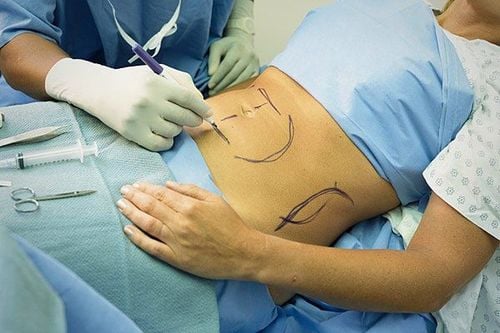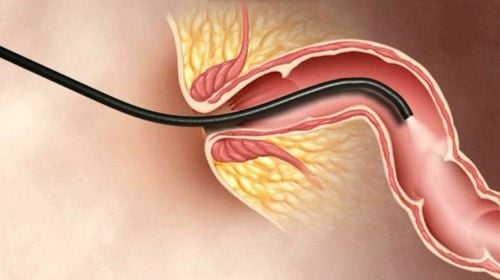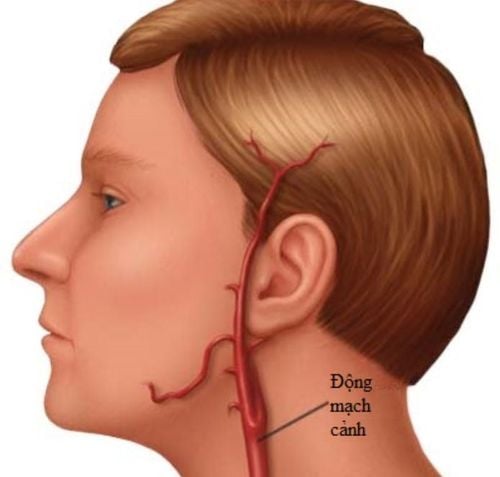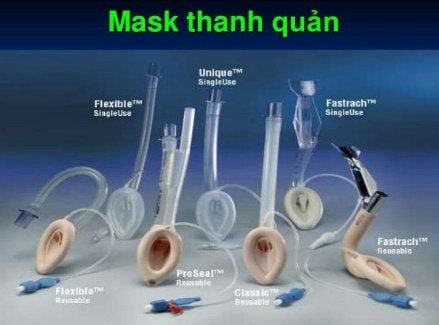This is an automatically translated article.
The article was professionally consulted by Specialist Doctor I Nguyen Duc Thong - Anesthesiologist - General Surgery Department - Vinmec Danang International Hospital. The doctor has 14 years of experience in the field of Anesthesia.Laparoscopic surgery to treat skull base hernia is usually indicated for cases of meningeal hernia congenital or due to trauma, meningeal herniation after surgery. Since this is a complex surgery, the most commonly used anesthetic during this procedure is general anesthesia with intubation.
1. Herniation of the base of the skull
The skull base of our body is composed of 3 parts:Anterior layer: formed by the frontal bone and in the middle there is a ethmoid plate, on both sides of the eye sockets. The middle layer: in the middle there is the pituitary pit and in front of the optic groove, in addition, there will be cavernous sinuses and temporal fossa on both sides. Posterior layer: includes the middle basal groove, with occipital foramen, occipital crest and internal occipital ridge, two sides are cerebellar fossa. Basement of the skull is a herniation of a part of the brain parenchyma, the meninges, or the sinuses of the anterior skull base.
To overcome this situation, the doctor will apply endoscopic nasal surgery to treat the lesions, with highly effective results, significantly reducing the rate of dangerous complications, and The length of hospital stay when using this method is also shorter than with other traditional treatment methods.
2. What is anesthesia in endoscopic surgery for hernia treatment of the base of the skull?
Laparoscopic surgery to treat skull base hernia is endoscopic surgery to widen the occipital foramen, so there is a high risk of affecting breathing and circulation. In addition, this surgery can also cause direct effects on the medulla oblongata, which is home to the circulatory and respiratory centers.Anesthesia in laparoscopic surgery for hernia treatment of the base of the skull helps to minimize dangerous complications, reduce pain and support the surgery to go smoothly. In particular, the most common anesthetic method in surgery for treating skull base hernia is general anesthesia with endotracheal intubation. And the anesthesiologist must be highly skilled, to ensure the surgery is safe, to prevent, detect, and promptly handle the complications related to surgery.
Anesthesia in endoscopic surgery to treat skull base hernia is indicated in cases where the patient has a transoccipital hernia and is indicated for surgery.
However, anesthesia is relatively contraindicated in the following cases:
Patient disagrees. Medical facilities do not provide enough anesthesia and resuscitation facilities according to the standards of the Ministry of Health. Anesthesiologists are inexperienced.

3. Anesthesia procedure for endoscopic surgery for treatment of skull base hernia
Check patient records and health status Perform technical manipulations Patient position: supine with 100% oxygen, at least 5 minutes before induction of anesthesia. Install the monitor, set up the transmission line. Anesthesia machine system with breathing, equipment to monitor vital functions (pulse, electrocardiogram, blood pressure, oxygen saturation, respiratory rate, temperature), monitor anesthesia Entropy, monitor muscle tenderness (TOF) , oxygen source and other machines such as defibrillators, sputum aspirators, heaters, infusion machines... Pre-anesthesia if necessary: Sleeping pills: including volatile anesthetics and tranquilizers circuit . Analgesic. Muscle relaxants. The condition for intubation is that the patient is in deep sleep and has sufficient muscle relaxation. * Technique for endotracheal intubation for patients by mouth:Open the patient's mouth, then insert the light into the laryngoscope on the right side of the mouth, slide the patient's tongue to the left to push the light deep, combined with the hand must perform cricoid cartilage compression to find the epiglottis and glottis. Perform rapid induction of anesthesia, Sellick procedure with full stomach. Gently insert the endotracheal tube through the glottis and stop only when the balloon of the endotracheal tube has passed about 2-3cm through the vocal cords. Gently withdraw the laryngoscope and inflate the endotracheal balloon. Then check the correct position of the endotracheal tube by listening to the lungs and the results of EtCO2. Secure the tube with adhesive tape. Place the cannula in the mouth to prevent the patient from biting the tube. The criteria for extubation are: The patient is awake, breathing well, Entropy index 90-100, TOF muscle relaxation > 90%. Can raise head for more than 5 seconds. The patient breathes spontaneously with a rate within stable limits. Pulse and blood pressure are stable. There were no complications from anesthesia and surgery.
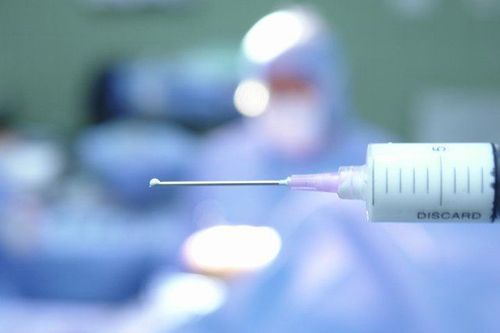
4. Complications and treatment
Reflux of gastric juice into the airway:Occurrence of digestive juices inside the airway and oral cavity. Carry out aspiration and have the patient lie down with the head low, and at the same time tilt the head to one side. Place the endotracheal tube quickly, then drain the fluid that is accumulating inside the airway. Monitor progress and prevent infection after surgery. Hemodynamic disorders:
Raise or lower blood pressure, the patient has arrhythmia. Each case has an appropriate treatment method. Complications due to intubation:
Unable to intubate: can be managed based on difficult intubation procedure or other anesthetic methods. Trauma when inserting a tube: patients with bleeding, vocal cord injuries, broken teeth, foreign objects falling into the airways, ... will be treated according to each type of injury. Anesthesia in endoscopic surgery for the treatment of skull base hernia should only be performed at facilities that are fully equipped with standard medical equipment, together with a team of experienced doctors, nurses, and medical staff. good adaptability. Therefore, to be safe, go to reputable medical centers for timely examination and treatment.
Vinmec International General Hospital is one of the hospitals that strictly applies safe surgical anesthesia practice standards according to international guidelines. With a team of experienced anesthesiologists and nurses, along with modern equipment such as nerve detectors, ultrasound machines, Karl Storz difficult airway control system, anesthesia monitoring system GE's comprehensive AoA (Adequate of Anesthesia) including monitoring of anesthesia, pain and muscle relaxation will deliver high quality and safety, helping patients to have adequate anesthesia, not awake, no residual relaxant muscle after surgery. Vinmec Health System is also proud to be the first hospital in Vietnam to sign with the World Anesthesiology Association (WFSA) towards the goal of becoming the safest hospital for surgical anesthesia in Southeast Asia.
Please dial HOTLINE for more information or register for an appointment HERE. Download MyVinmec app to make appointments faster and to manage your bookings easily.





